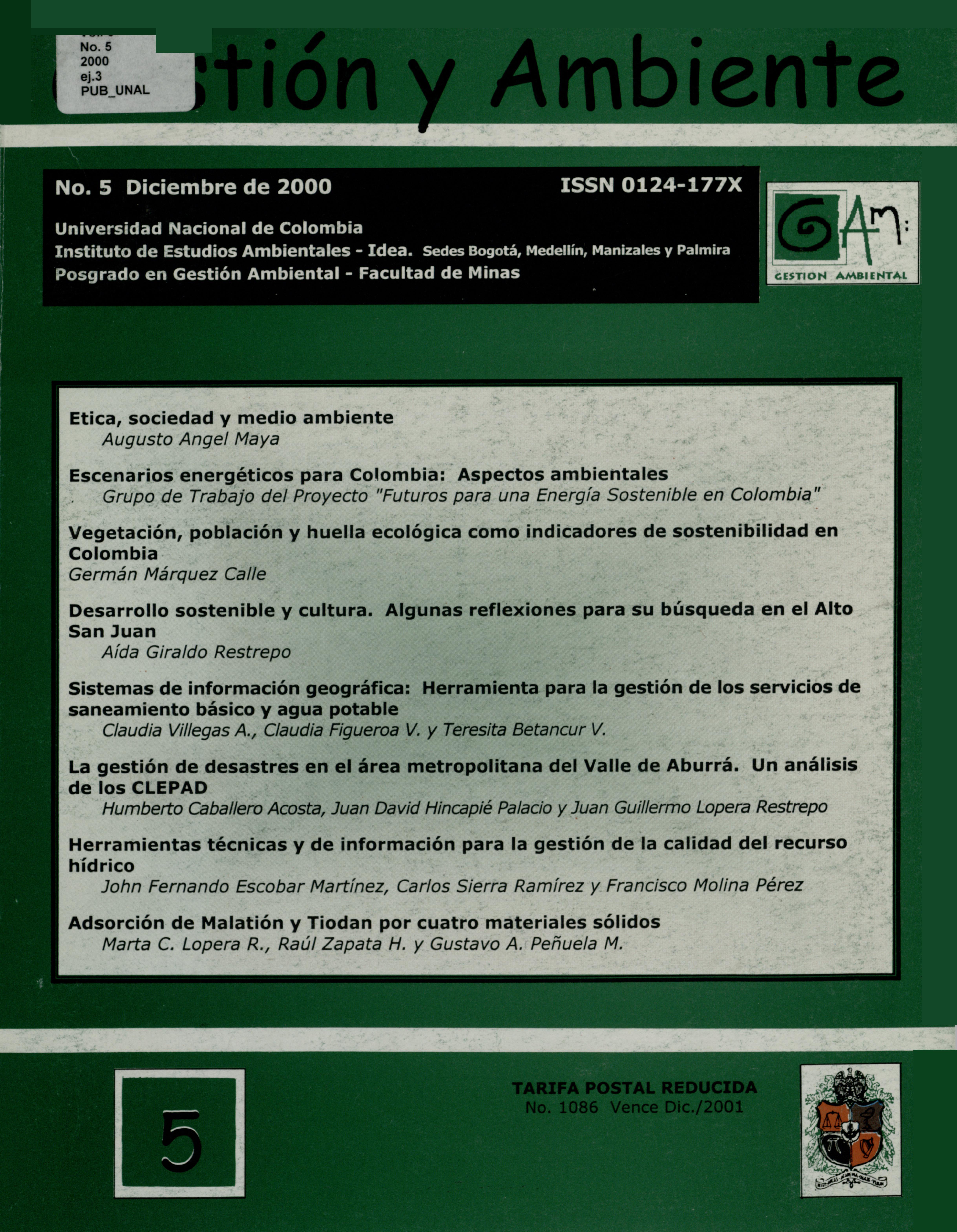Herramientas técnicas y de información para la gestión de la calidad del recurso hídrico
Palabras clave:
sistemas de información geográfica (SIG), toma de decisiones, calidad del agua, cuenca hidrgráfica (es)Descargas
Dada la complejidad de un ecosistema acuático y la imposibilidad de realizar experimentos a escala real, el ingeniero de calidad de aguas representa las diferentes reacciones e interacciones, que ocurren en estos ecosistemas, por medio de modelos matemáticos. Esto constituye una poderosa herramienta que permite el desarrollo de estudios prospectivos y el apoyo a la toma de decisiones. Este articulo presenta una propuesta de integración que permite asociar las capacidades de análisis espacial y representación visual de SIG, con los resultados obtenidos tradicionalmente de los modelos de calidad del agua, de tal forma que se aumente la interacción con el usuario de la información, y se desarrollan nuevas herramientas que ayudan en la toma de decisiones y la administración del recurso hídrico.
Given the complexity of an aquatic ecosystem and the impossibility of making experiments on a real scale, the water quality engineer represents the different reactions and interactions, that happen in these ecosystems using mathematical models. This constitutes a powerful tool that allows prospective studies and helps in the decision making. On the other hand, the huge volumes of information produced by the geographical space analysis and the large amount of variables involved, make the Geographical Information Systems (GIS) a powerful tool to develop analysis, modeling and simulation tasks on a defined area and the processes related to it. This article presents an integration proposal that permits to associate both, the spatial analysis and the visual representation capabilities of a GIS application with the water quality results obtained from a mathematical model, in such a way that, the interaction of the users of the information get increased, and the development of new tools helps in the decisions making and administrative process in the management of the water resources.
Referencias
Environmental System Research Institute. 1.996 ArcView Gis. New York, Estados Unidos de América.
Environmental System Research Institute. 1.996 ArcView Spatial Analyst. New York, Estados Unidos de América.
Environmental System Research Institute. . 1.996 ArcView 3D Analyst. New York, Estados Unidos de América.
International Institute for Aerospace Survey & Earth Sciences. Ilwis 1.1: Applications Guide. Esnchede, The Nwetherlans. 1.997
M. Lahlou, L. Shoemaker, et al. 2000. Better Assessment Science Integrating Point and Nonpoint Sources-BASINS, User’s. United States Environmental Protection Agency. Fairfax, Virginia - EUA.
Kenneth E. Foote and Donald J. Huebner. 1996. The Geographer's Craft Project, Department of Geography, The University of Colorado at Boulder.
Thomann, R, V and Mueller, J, A, 1987. “Principles of Surface Water Quality Modeling and Control”. Harper & Row, New York.
Brown, L. C. and Barnwell, T. O., Jr. 1987. The enhanced Stream Water Model QUAL2E and QUAL2E-UNCAS: Documentation and Users Manual, U. S. Environmental Protection Agency, Athenas, GA, Report EP A/600/3-87/007
Chapra, S. C. 1997. “Surface Water Quality Modeling”. McGraw-Hill, New York
Cómo citar
APA
ACM
ACS
ABNT
Chicago
Harvard
IEEE
MLA
Turabian
Vancouver
Descargar cita
Visitas a la página del resumen del artículo
Descargas
Licencia
Derechos de autor 2020 Gestión y Ambiente

Esta obra está bajo una licencia internacional Creative Commons Atribución-NoComercial-CompartirIgual 4.0.
Los artículos que sean publicados en la revista Gestión y Ambiente, también serán publicados en el sitio web http://www.revistas.unal.edu.co/index.php/gestion/index y en formatos electrónicos como PDF, HTML, XML, entre otros. Además, en diferentes redes sociales de difusión del conocimiento. Gestión y Ambiente adopta directrices de ética por Committee on Publication Ethics (COPE) sobre buenas prácticas de conducta (evitar conductas como plagio, falsificación, autoría ficticia, entre otros), describe conflictos de interés o en competencia, contribuciones de autoría y fuentes de financiación. Todo lo publicado se considerará propiedad de la revista Gestión y Ambiente, pero pueden usarse bajo la licencia Creative Commons “Reconocimiento-No Comercial-Compartir Igual International (BY-NC-SA) 4.0”
















